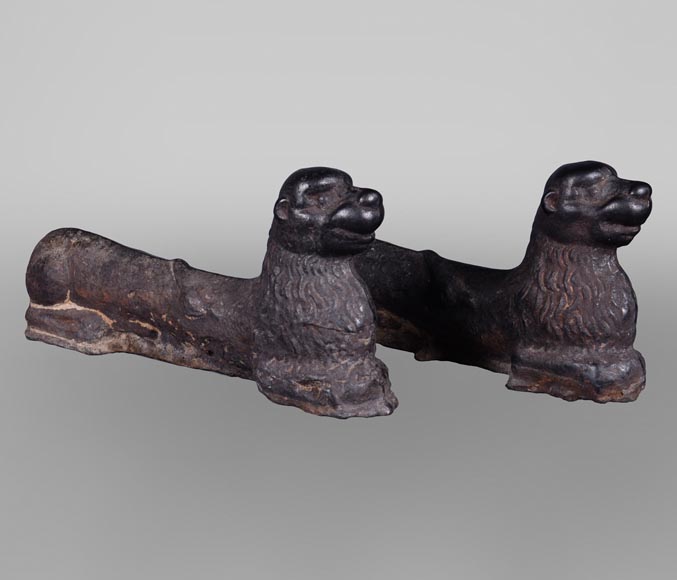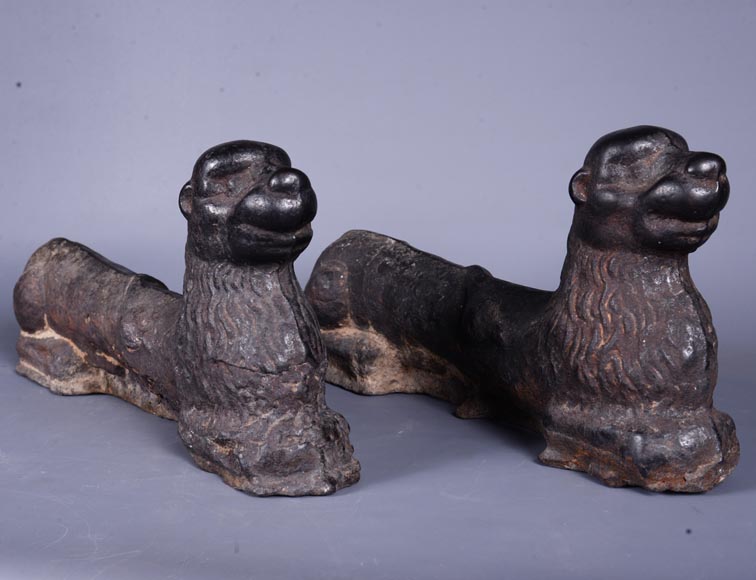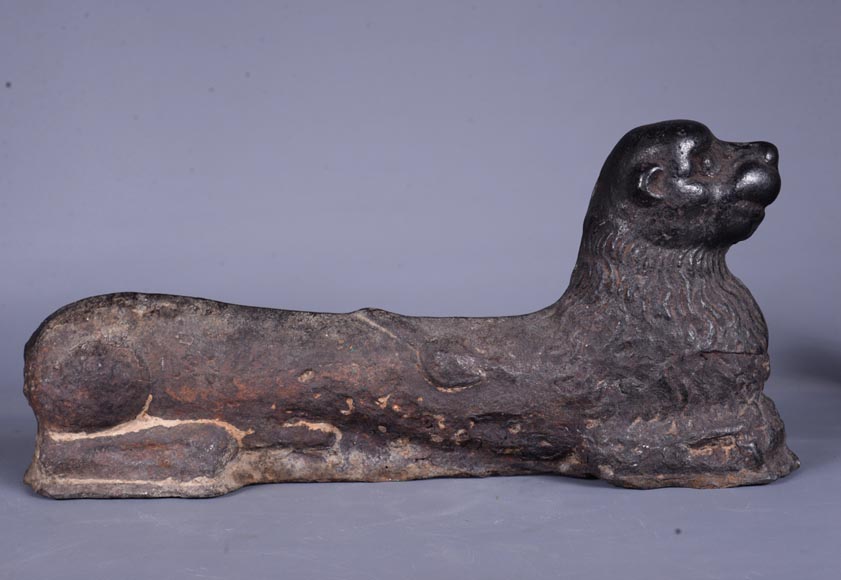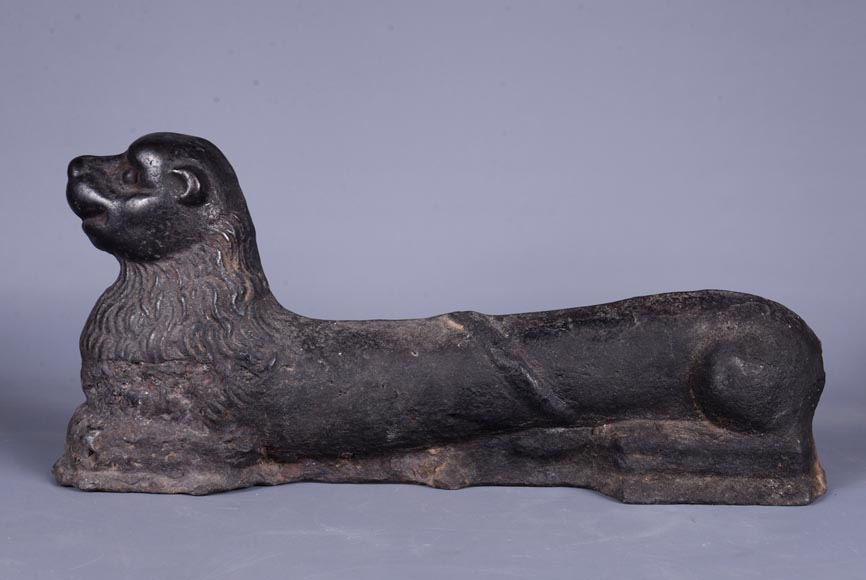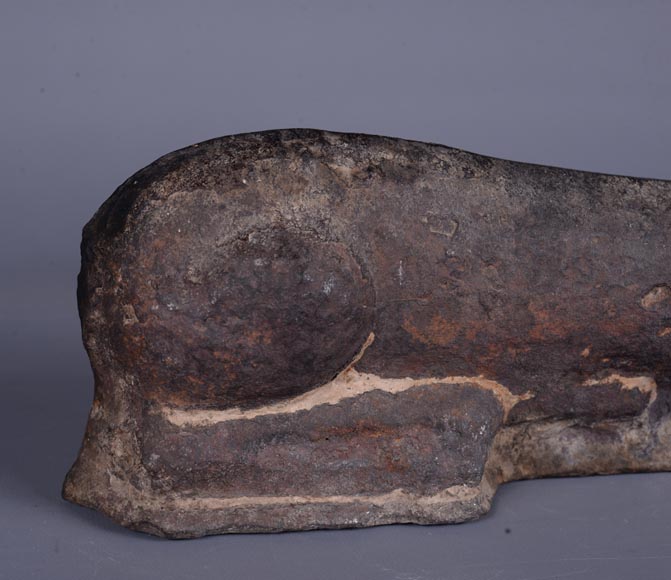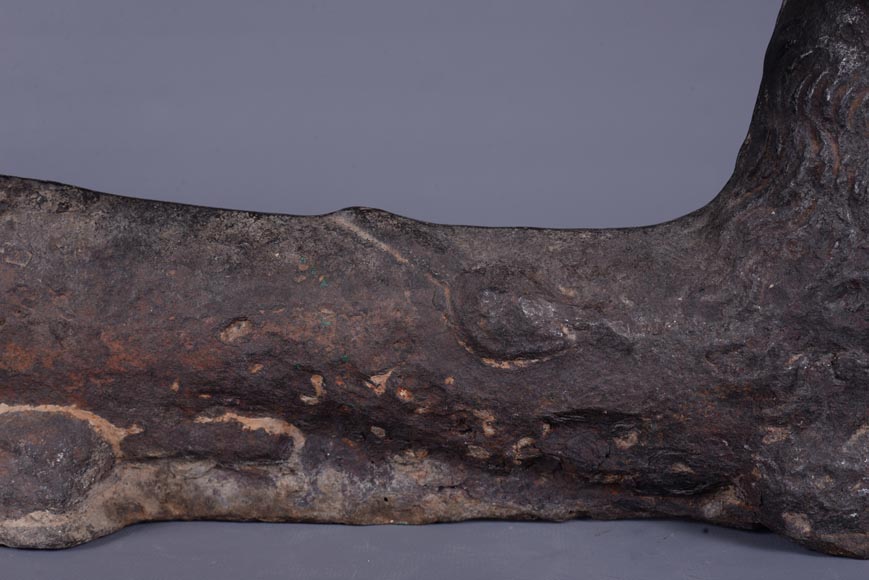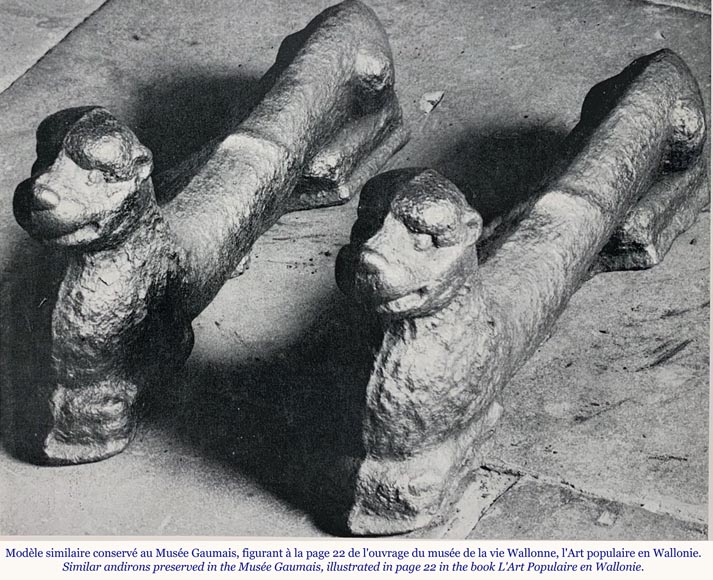Style Other / Ref.12745
Rare pair of cast iron andirons shaped as a laying dog, Wallonia, 16th century
Dimensions
Width 3'' ⅛ 8cm
Height 7'' ⅛ 18cm
Depth: 16'' ⅞ 43cm
Origin:
Belgium. 16th century.
Product of the popular figurative art of Wallonia, this pair of andirons made in the 16th century in cast iron shows a naive beauty but is also a testimony of some kind of aesthetic concerns. Made in a zoomorphic shape, the Musée Gaumais, where a similar pair is preserved, describes them as a representation of laying dogs. However, our andirons shows distinctly the representation of hair all around the neck suggesting a mane. Furthermore the representation of the head can also lets us think that a lion is represented instead of a dog. The author of those andirons didn't only give a shape to their visible parts. Indeed the back shows as much precised details with the add of a relief scroll on each side, in which we can see a stylization of the back legs. Also, a small ornamental bolection was added on the andiron's body. It's a very certain inventive spirit, a dexterity but also a sensitivity that the popular art in Wallonia expresses through this pair of andirons.
The Wallonia is a French speaking region of the Belgium's south. It is famous for its medieval cities and its Renaissance architecture. Nevertheless, we can't find a real stylistic unity in the region because of the neighbors variety and sometimes the different influences from the outside, without saying the individualism.
In olden days, we could count simultaneously and on a very small area, subjects of the Liège Prince-Archbishop, Limbourg or Luxembourg Duke, Prince-Abbot of Stavelot-Malmedy, Namur or Hainaut Count, either independent or under the Burgundian, Spanish, Austrian or French tutelage. This historic past that has divided the actual Wallonia into divided political territories, sometimes rivals, can also explains this dispersal.
Informations
Price: on request
Recommended for you :
Dimensions:
Width: 73
Height: 80
Depth: 5
Dimensions:
Width: 90
Height: 76
Depth: 4
Dimensions:
Width: 7
Height: 16
Depth: 33
Dimensions:
Width: 12
Height: 19
Depth: 34
Dimensions:
Width: 14
Height: 29
Depth: 34
Dimensions:
Width: 6
Height: 17
Depth: 31
Dimensions:
Width: 80
Height: 110
Depth: 6
Dimensions:
Width: 16
Height: 18
Depth: 48
Dimensions:
Width: 77
Height: 95
Depth: 4
Dimensions:
Width: 63
Height: 68
Depth: 7
Dimensions:
Width: 97
Height: 100
Depth: 5
Dimensions:
Width: 51
Height: 54
Depth: 5



